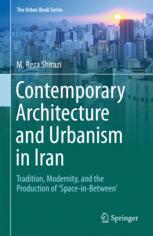

Most ebook files are in PDF format, so you can easily read them using various software such as Foxit Reader or directly on the Google Chrome browser.
Some ebook files are released by publishers in other formats such as .awz, .mobi, .epub, .fb2, etc. You may need to install specific software to read these formats on mobile/PC, such as Calibre.
Please read the tutorial at this link: https://ebookbell.com/faq
We offer FREE conversion to the popular formats you request; however, this may take some time. Therefore, right after payment, please email us, and we will try to provide the service as quickly as possible.
For some exceptional file formats or broken links (if any), please refrain from opening any disputes. Instead, email us first, and we will try to assist within a maximum of 6 hours.
EbookBell Team

0.0
0 reviewsThis book presents an in-depth critical analysis of the internationally recognized, place-specific works of three Iranian architects (Nader Ardalan, Kamran Diba and Hossein Amanat) during the 60s and 70s, and their significant contribution to the emerging anti-modernist discourse.It argues that from the mid-19th century onwards architecture and urban design in Iran has been oscillated between two extremes of modernity and tradition. Drawing on the theory of ‘critical regionalism’ (Kenneth Frampton), the book critically analyses writings and works of the above-mentioned architects and contends that they created a ‘space-in-between’ which unified two extremes of tradition and modernity in a creative way (Khalq-i Jadid: New Creation). The book also contains three in-depth interviews with architects to discuss their singular narrative of the creation of ‘in-between’. A concluding chapter addresses the promises of critical regionalist architecture and urban design in post-Revolutionary Iran as well as the Middle East, where the dichotomy of tradition and modernity is yet a valid account.